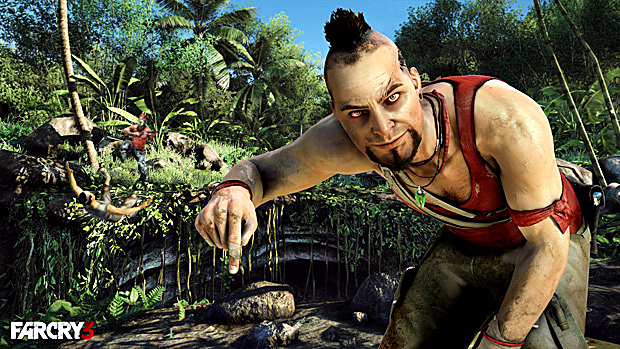While “Far Cry 3” flaunts marked improvements over its predecessor, Ubisoft’s latest first-person shooter game adds little to the genre as a whole and may leave more attentive fans unsatisfied.
Without giving too much of the plot away, “Far Cry 3” has players assume the identity of Jason Brody, a hapless vacationer who winds up in the midst of a slave-trafficking ring. Forced to escape from his captors and reclaim each of his friends, Brody transforms from a docile thrill-seeker into a vengeful king of carnage. Taking place on the picturesque Rook Island, an uncharted island in the Pacific, the events of “Far Cry 3” play out through a series of main missions that can be supplemented with hours of exploration, hunting and side quests.
The innovative soundtrack for the game is rather impressive, complementing suspenseful moments with high-tempo music to heighten the intensity. Most of the characters are fleshed out and believable, with a couple of cliche exceptions. But where the story lacks credibility, it makes up for it with solid gameplay.
When Ubisoft released “Far Cry 2” in 2008, the Montreal-based game studio may have bitten off more than it could chew. Gun jams, vehicle breakdowns, cumbersome travel, random ambushes and fatal bouts of malaria made the game a tenuous balance between frustration and pure rage. Instead of drawing players in, these features often served to deter players altogether. Thankfully, many of those shortcomings are addressed or scrapped in “Far Cry 3.” With the help of a fast-track system, traveling and game-saving have substantially improved. Dying no longer means being reverted to a safe house seven miles away from a mission. Although bandaging wounds is still necessary, Brody does not suffer from malaria-induced heart palpitations in the heat of combat.
Ditching the African savannah of “Far Cry 2,” Rook Island’s sandbox environment allows for hundreds of diverse combat situations. Running over unsuspecting enemies, hang-gliding into firefights and strategically planting C4 charges around outposts never seems to get old. Players will have to try hard not to feel like a badass.
A new skill progression meter in “Far Cry 3” is a welcome contribution to the series, since it integrates a common aspect of role-playing games into the often one-dimensional genre of shooters. By completing various tasks around the island and gaining experience points, Brody can acquire tattoos, or “tataus,” that denote different abilities. Whether it’s swimming faster or stringing together multiple kills, evolving into a more efficient killing machine is surprisingly addictive. Customizing weapons and crafting equipment tacks on several more enjoyable hours of gameplay.
Despite these improvements, “Far Cry 3” still plays host to some irking qualities of its own. A below-average frame rate and numerous loading screens on the console editions make it difficult for gamers to remain immersed in the world of Rook Island. PC gamers will no doubt enjoy a more fluid experience with high-end central processing units. Similarly, artificial intelligence leaves much to be desired, even on the highest difficulty. Combat is only as dynamic as players choose to make it, since enemies do not add much variety of their own to each encounter. Most of the time, artificial intelligence make easy targets by standing in the open during fights, which ultimately discourages creativity or strategy. Wild animal attacks during shoot-outs, dying during cutscenes and overly-sensitive vehicle steering can likewise detract from a more polished experience.
Multiplayer and cooperative game modes are nothing to write home about, unfortunately. Taking obvious cues from industry leaders like Call of Duty, “Far Cry 3” has a couple of basic gametypes and maps to choose from, most of which do little to draw players in.
For first-person shooter fans seeking shelter from the stifling monotony of “Halo” and “Call of Duty,” “Far Cry 3’s” exciting single player campaign may be the answer. Offering a more robust sandbox-gaming experience than ever before, Ubisoft succeeds in creating a break from generic shooters. However, a far-fetched plot and online game modes that do not break new ground may be tough sells to more astute gamers.
Printed on Monday, Dec. 3, 2012 as: Sequel shows cast improvement















